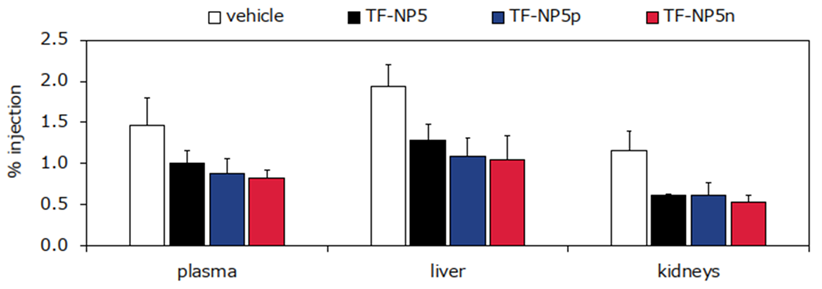Advantage and Core Benefit
- Selectively and rapidly adsorbs indole in small doses and is easy to use.
- Promising for development as an animal drug with high unmet needs in chronic kidney disease.
Background and Technology
Chronic kidney disease leads to a decline in renal function and, as the disease progresses, to chronic renal failure, eventually requiring dialysis. Chronic renal failure is caused by indole produced and absorbed in the gut, which is converted to indoxyl sulfate in the liver and accumulates in the kidneys instead of being eliminated. Inhibition of indole absorption from the intestinal tract is effective in delaying the introduction of dialysis, and spherical adsorbed charcoal (Kremezin) has been used for this purpose. However, Kremezin adsorbs hydrophobic substances nonspecifically and must be taken at least one hour after a meal. It also requires a large dose of 6 grams per day, which is difficult to take and has side effects such as abdominal discomfort and constipation.
Inventors have developed polymeric nanoparticles (NPs) that can specifically adsorb the target molecule indole in the gastrointestinal tract by adjusting the composition of hydrophobic and charge monomers and polymerising N-Isopropylacrylamide (NIPAm) as a base material N-tert-. Butylacrylamide (TBA) and 2,3,4,5,6-Pentafluorophenyl acrylamide (5 FPAA), the amount of indole adsorbed was increased by increasing the ratio of hydrophobic polymers, and the adsorption performance was more rapid than that of Kremezin. When 5 mg of the prepared polymeric nanoparticles were orally administered in mice, indole absorption in vivo was found to be inhibited. In addition, the accumulation of indole in various organs in vivo was hardly observed and most of it was discharged with indole in feces, indicating that it is expected to have low toxicity. The efficacy of the drug is currently being evaluated in a study using mice with renal impairment.
Data
- The adsorption of indole after shaking for 10 s was approximately 5% for Kremezin, whereas the prepared NPs showed an adsorption rate of over 40%.
- The absorption of indole-derived substances in various organs was measured six hours after oral administration (5 mg/mouse) of nanoparticles with different charges (no charge: TF-NP5, positive charge: TF-NP5p, negative charge: TF-NP5n) and radiolabeled indole. The accumulation of indole-derived substances in the kidneys was less than 1% of the administered dose.
 |
Researcher
Dr Hiroyuki Koide (University of Shizuoka)
Expectations
Joint development with pharmaceutical and veterinary companies interested in developing drugs in the field of renal disease is desired. Material licensing (for a fee) of polymeric nanoparticles (NPs) and collaborative research for evaluation towards the license-out of patents and know-how is possible. Data on the results of tests on mice with renal impairment can be disclosed under a confidentiality agreement.
In addition, we can propose joint research on the development of nanoparticles that absorb specific molecules, with the target molecule set. Discussions with companies with target molecules or ideas are also welcome.
Project.WL-04993


